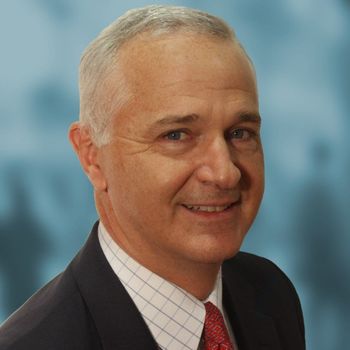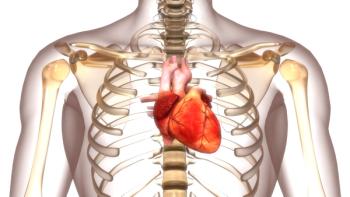
Value-based care, independent physicians, lifestyle choices all part of MAHA
Key Takeaways
- CMS leaders emphasize value-based care, rural physicians, and lifestyle choices to address rising healthcare costs and chronic diseases.
- The CMS Innovation Center's plan includes prevention, proactive health goal achievement, and promoting competition as key pillars.
CMS Innovation Center leader outlines strategy for Making America Healthy Again.
Value-based care, independent and rural physicians, and lifestyle choices all will have a role in Making America Healthy Again, according to Medicare’s top leaders.
Mehmet Oz, MD, MBA, administrator for the U.S. Centers for
With rising costs but more chronic disease, the American health care systems is at a critical juncture, they said.
“Let me start with a simple premise: Great societies protect their most vulnerable, and we're a great people, so we're going to do just that alongside partners like you,” Oz said in a
“I believe we have a generational opportunity to give people power over their health and to save our health care system from costs that are rising faster than our economy,” Oz said. Solutions and innovations are born from tough realities, and change will take hard work, he said.
Current problems
Sutton, the author of a
- Medicaid is the greatest public expense for most states.
- Health care expenditures are outpacing the overall economy by up to 3% a year.
- Medical errors are the third leading cause of death in the nation.
- Six in 10 people have at least one chronic disease, while four in 10 have multiple chronic diseases.
- America’s life expectancy lags other developed nations by five years.
- The Medicare trust fund is projected to be insolvent by 2036.
“But if we come together to leverage innovation and smart public policy, our approaches can change these challenges,” Sutton said. “We can address them with intention and rigor. We have a meaningful opportunity to drive systematic change and help people stay healthier longer.”
Protecting the American taxpayer is the foundation of the CMS Innovation Center Solution, which has three pillars, Sutton said.
Prevention
CMS will promote evidence-based prevention. “Prevention is the cornerstone of healthy living, and we plan to incorporate it across our entire portfolio in every single model,” Sutton said.
Part of the strategy will be promoting physical activity and good nutrition, with healthier lifestyles that slow disease progression. The administration will engage patients, physicians and other clinicians, and broader community organizations that promote evidence-based activities, he said.
Data collection also will be vital to the effort, Sutton added.
Achieving health goals
The health care system must shift from a reactive stance to become a proactive provider that empowers Americans to achieve their health goals, Sutton said. People need relevant information to make decisions about their health. Technology and data sharing can help with solutions ranging from patient-facing mobile apps to waivers that support predictable cost-sharing for services, drugs and devices, he said.
Healthy competition
The third pillar for MAHA is to drive patient choice and promote competition in the market, Sutton said. This will involve physicians and
“Whenever possible, we'll give patients more options for care and more opportunities to benefit from a health care system that incentivizes high quality care,” Sutton said. “This involves engaging new provider types that have not traditionally stepped forward, to participate in our models, such as independent and rural practices, to participate in innovation center models and enable home based care. More choice means that patients will be better able to find providers in their communities who best meet their unique needs and then the setting that works best for them all while driving down costs to make care more affordable.
“We are also interested in finding ways to make it easier for providers who practice independently to engage in our models,” he said. “We often hear from providers and payers that engaging in value-based care has been overly complicated, and the administrative burden is a major barrier. For this reason, the innovation center will seek to simplify and standardize our portfolio of models where possible, and we will look for ways to create more predictability in our work, such as the standardized quality measures, improved and simplified benchmarking that does not present opportunities for arbitrage and providing fewer mid-model changes due to upfront design considerations that ensure they were aligned with our statute.”
Sutton offered additional details on what that could mean financially for doctors:
- Future models will expand the use of advanced shared savings and prospective payments to support independent physicians and other clinicians.
- Medicare Advantage will increase high-value coverage options to promote whole health.
- The administration will support site neutrality so “current delivery system incentives do not impede choice.”
- CMS will support state-level changes, such as confronting uncompetitive certificate of need laws.
- Model features such as quality measures will be standardized to reduce administrative burdens.
Value-based care
During a question-and-answer session, Sutton said the administration and CMS remain committed to value-based care and the transition to it from fee-for-service payment.
“We plan to update existing and design new original Medicare models to leverage payments and regulatory flexibilities such as waivers and beneficiary enhancements for incentives,” Sutton said. “We're going to expand our work to test improvements in Medicare Advantage on Medicaid. We're also going to look to do more in the drug space in the years ahead. We're going to drive better spending and outcomes for drugs to promote efficiency through devices and technology as well. We'll continue to work with states to drive multipayer approaches to state level delivery system transformations, the existing and new model concepts, and we'll focus on the best ways to include independent providers and rural participants in value-based care and address additional patient types.”
Collectively, the updated and new models will be a platform that enables the Innovation Center to realize the vision to help Americans build healthier lives through permanent Medicare and Medicaid programs and the Children’s Health Insurance Program, he said.
Newsletter
Stay informed and empowered with Medical Economics enewsletter, delivering expert insights, financial strategies, practice management tips and technology trends — tailored for today’s physicians.








